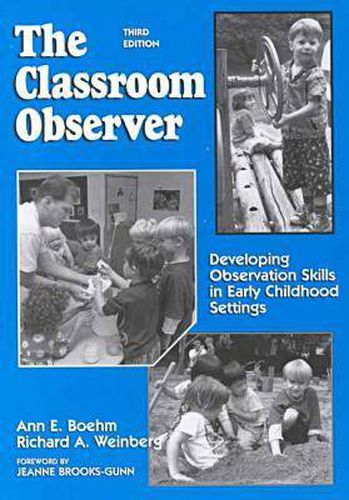Readings Newsletter
Become a Readings Member to make your shopping experience even easier.
Sign in or sign up for free!
You’re not far away from qualifying for FREE standard shipping within Australia
You’ve qualified for FREE standard shipping within Australia
The cart is loading…






Systematic observation is essential for educators to evaluate properly the effectiveness of curricula and to address the problems of individual students. This volume emphasizes early childhood settings, and focuses on those skills that enable the observer to make appropriate, valid inferences and to arrive at decisions based on objective observation data gathered in natural learning environments and diverse educational settings. The edition includes new focuses on: procedures for observing environmental factors that affect learning and behaviour; the importance of understanding the cultural and linguistic characteristics of children’s learning environments; the key role of observation in the assessment process; the forms of observation, with illustrative examples; and the exploration of reliability, sampling behaviour, recording formats, summarizing observational outcomes and validity. Using photographs, sample worksheets, a simple format and straightforward language, the authors cite real-life examples from early childhood that can be applied to a variety of classroom experiences.
$9.00 standard shipping within Australia
FREE standard shipping within Australia for orders over $100.00
Express & International shipping calculated at checkout
Systematic observation is essential for educators to evaluate properly the effectiveness of curricula and to address the problems of individual students. This volume emphasizes early childhood settings, and focuses on those skills that enable the observer to make appropriate, valid inferences and to arrive at decisions based on objective observation data gathered in natural learning environments and diverse educational settings. The edition includes new focuses on: procedures for observing environmental factors that affect learning and behaviour; the importance of understanding the cultural and linguistic characteristics of children’s learning environments; the key role of observation in the assessment process; the forms of observation, with illustrative examples; and the exploration of reliability, sampling behaviour, recording formats, summarizing observational outcomes and validity. Using photographs, sample worksheets, a simple format and straightforward language, the authors cite real-life examples from early childhood that can be applied to a variety of classroom experiences.